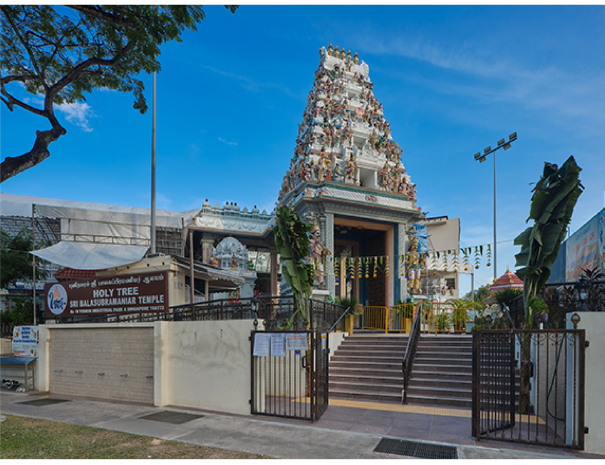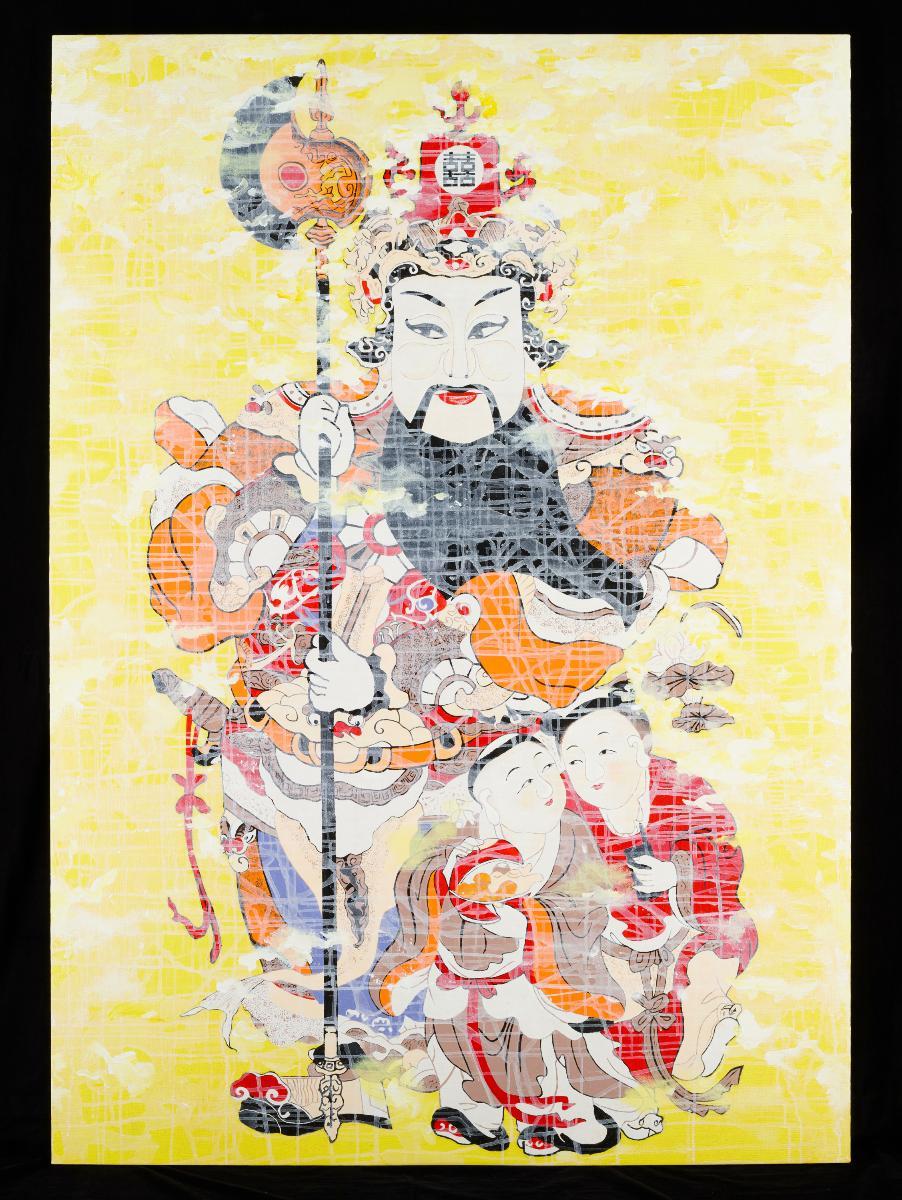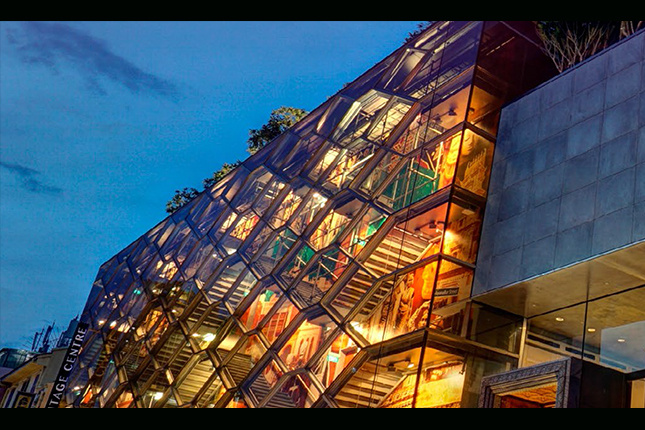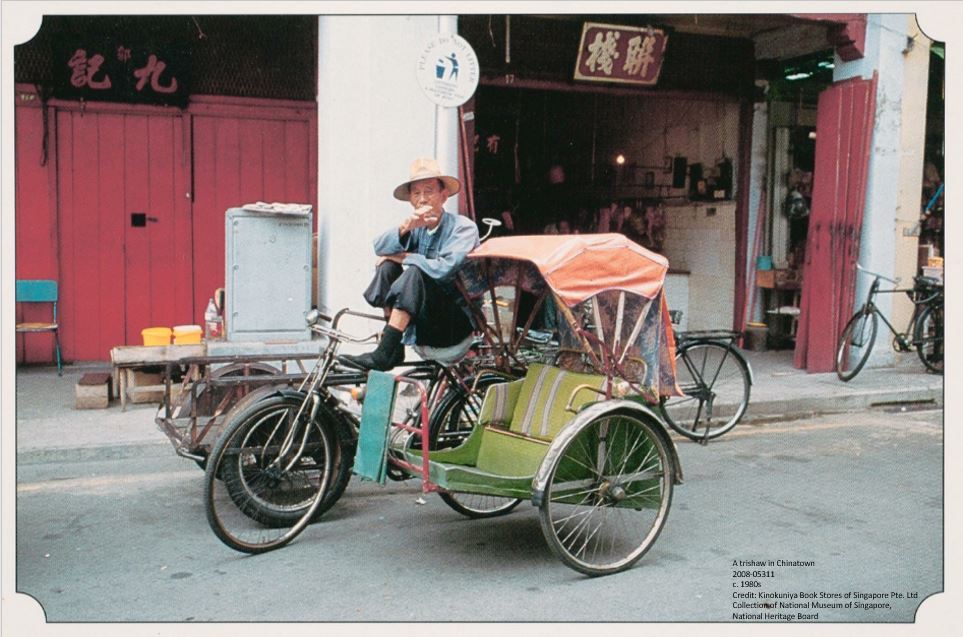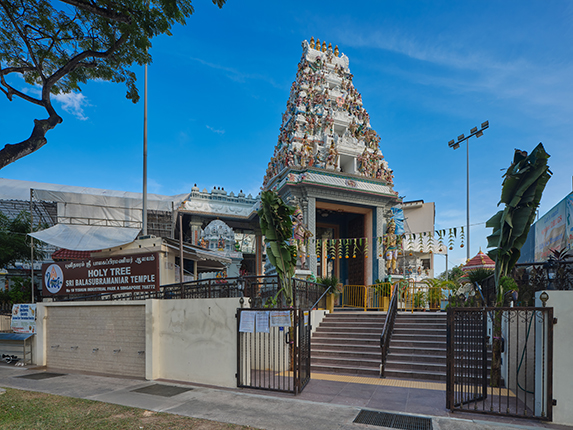Holy Tree Sri Balasubramaniar Temple dates back to 1962 when it was founded as a small shrine near Canberra Road. It later became a religious and social space for the Hindu community in the former Sembawang Naval Base, which included Tamils from Tamil Nadu as well as Malayalees from Kerala.
In 1962, P. Karuppiah, a dockyard worker, dreamt of the Hindu deity Lord Murugan and a golden cobra under an elantha (jujube) tree. He then found the tree of his dream near Canberra Road and set up an altar beneath it. Hindu dockyard workers began to pray at the altar and later built a wooden shed to house the shrine.
In 1964, the shrine was registered as Punithamaram Sree Balasubramaniar Temple. Punithamaram means “Holy Tree” in Tamil, while Sree Balasubramaniar is a title of Lord Murugan. Devotees later raised funds to build a proper temple, which was consecrated in March 1971. When Canberra Road was being redeveloped, the temple relocated to the present site in 1996. The temple was later rebuilt, and the current building was consecrated in 2018.
Today, Holy Tree Sri Balasubramaniar Temple continues to serve the Hindu residents of Sembawang and Yishun. It is also known for organising Panguni Uthiram, an annual festival in which devotees take part in a chariot and foot procession to commemorate the marriage of Lord Murugan and his consort Deivanai.
Explore the Suggested Short Trail Routes:
- Historical Landmarks of Sembawang, 2 hours with public transport (7km)
- Communities of Sembawang, 3 hours with public transport (8km)
- From Dockyard to Shipyard, 2.5 hours with public transport (5km)
Downloads
Sembawang Heritage Trail BookletSembawang Heritage Trail Map - English
Sembawang Heritage Trail Map - Chinese
Sembawang Heritage Trail Map - Malay
Sembawang Heritage Trail Map - Tamil
Sembawang Heritage Trail Markers - Chinese
Sembawang Heritage Trail Markers - Malay
Sembawang Heritage Trail Markers - Tamil





